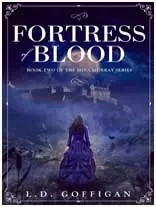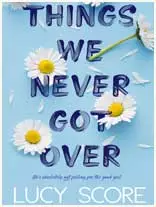Autobiographies, Biographies, and Memoirs: A Conceptual Exploration

Have you ever given a thought to what distinguishes autobiographies, memoirs, and biographies and what role they play in society? Is reading these writings something you enjoy? Given this, you should venture into the world of historical fiction.
Historical fiction takes the readers back to the historical periods and places through the use of adjectives and adverbs. The essence of people’s character and the consequences of prior actions are revealed to the reader in this captivating genre of literature.
When it comes to books that contain the author’s history, it can be proved rather challenging to differentiate them since autobiographies and memoirs seem to be extremely alike to biographies. We assure you that we explain them and contrast the two of them in detail.
Let’s look at how all of these genres are different and how can we help to write one with out being confused and mixing it with the other.
Tips for Differentiation
Differentiating between types of stories is essential to help readers understand and relate to them. Here are some helpful and detailed tips to help you do just that.
Authorship is Important: While writing or composing a story, an author needs to pay a lot of attention to the particular figure, which is the narrator. Is the work one written by the subject of the work, or is the work focused on the telling of another individual’s life? An autobiography enables a person to see the person’s touch as well as biases and unbiased results. Thus, while there are characteristics that release biographies from features of personal oeuvre, they provide a factually reliable representation of events and occurrences.
Think About The Bigger Picture: Think about the story's scope as well. Do you mean a detailed account of your life (memoir) or a more narrowly focused examination of a few key moments (autobiography, biography)?
Biographies and autobiographies give more detailed information, but diaries can be more focused and specific as they include a person’s raw thoughts and wild imagination as well as factual events.
Diving In Viewpoints: One of the other aspects to ponder upon is perspective. It is crucial in many ways to think about the way in which the story's perspective is framed. Which point of view is it going to be? A memoir from the first person or a biography from the third?
A third-person narrative provides a more dispassionate perspective than biased first-person accounts, which are better for building an emotional connection.
Brief Comparative Analysis: What is Autobiography, Biography, and Memoir?
Criteria | Autobiography | Biography | Memoir |
Authorship | Written by the person about their own life. | Written by someone else about another person. | Authored by the person, focusing on specific memories. |
Perspective | First-person perspective. | Third-person perspective. | First-person perspective, often thematic. |
Scope | Comprehensive, covering the entire life. | Encompasses a person's entire life but may not delve into every detail. | Focuses on specific themes, events, or periods. |
Purpose | To share a comprehensive life story. | To provide an objective overview of a person's life. | To explore and reflect on specific experiences or themes. |
Examples | Nelson Mandela's "Long Walk to Freedom." "The Diary of a Young Girl" by Anne Frank. "I Know Why the Caged Bird Sings" by Maya Angelou. | "Steve Jobs" by Walter Isaacson. Ron Chernow's "Alexander Hamilton." "The Immortal Life of Henrietta Lacks" by Rebecca Skloot. "The Wright Brothers" by David McCullough. | "Eat, Pray, Love" by Elizabeth Gilbert. Cheryl Strayed's "Wild." "The Glass Castle" by Jeanette Walls. "Angela's Ashes" by Frank McCourt. |
Breakdown of Features
Autobiography: The Story of My Life
An autobiography per se, in a way that it is recollected from the author’s onwards, presents life intimately.
This type of writer has the power to elicit the tendencies in the reader and to interest him/her to the stories with deep emotions.
On the contrary, biographies are a deeper and less biased description of the events that happened in a particular person’s life.
Biography: A Third-Person Exploration
The author of abiography is typically an impartial third party who compiles information about the subject's life from a variety of sources.
While autobiographies include a wealth of subjective insight and persona information, biographies tend to be more objective.
Memoir: Thoughts and Opinions on a Focus Topic
On the otherhand, diaries are a type of narrative form that focus on a person's life story or an event that happened in that life.
Most of the time, memoirs are more personal than biographies and give a more in-depth look into a certain part of the author's life.
Personalinsights, narrative around themes, and extensive details are common elements of memoirs.
Examining Stories from Real Life Using Real-Life Examples
Thus, we find ourselves in the vast expansion of life narratives; examples serve as invitations to determine whether readers are to be agents or patients.
All these biographies, autobiographies, and memoirs signify that people’s history is vast and complex in all the forms it can be written. Travel with me on a little journey as we review great examples that strive to demonstrate how diverse and strong different styles are.
Autobiographies: Courage Stories from Personal Experiences
Example 1: Anne Frank's "The Diary of a Young Girl" shows how personal narratives matter. Anne's diary is a vivid depiction of her life set against the Holocaust. A young girl enduring incredible circumstances shows her perseverance, hope, and courage in her own words. Anne's autobiography takes us into a person's soul, creating empathy and understanding.
Example 2: Nelson Mandela's "Long Walk to Freedom" is a fascinating autobiography that covers his unique life from childhood to apartheid struggle and South African presidency. Mandela's eyewitness narrative shows his resilience, sacrifice, and un shakable devotion to justice.
Example 3: The author uses emotions in elaborating their ideas as to how, through the walk of life, they and many have been put down because of gender and race.
She is a wonderful writer when it comes to writing about loneliness, sticking it out, and personality. Secondly, her story shows the general framework of liberation and the process of emergence in addition to presenting readers with the life story of a girl.
Biographies: People’s Views On Unusual Existence
Example 1: "Steve Jobs" by Walter Isaacson:Steve Jobs by Walter Isaacson seems to provide a cast lens view of Apple’s co-founder. The works undertaken by the author help one understand Steve, his character, his ideas, and how each of those ideas in their potential could affect the world. He noted down the highs and lows as per his experiences that actually captivate the readers and make them glued to the book.
Example 2: "The Immortal Life of Henrietta Lacks" by Rebecca Skloot: The rewards derived from the exploitation of Henrietta Lacks’ cells for scientific research remain unknowns her; however, Rebecca Skloot does a good job of portraying her life. Writethrough a vivid narration of Henrietta Lacks’s impact on medicine and Lack’s family story, “The Immortal Life of Henrietta Lacks” depicts the story of a woman whose cells revolutionized bioscience. This shows how biographies can focus on the subject’s life and the consequences of that life to other people.
Example 3: "The Wright Brothers" by David McCullough: Biography provides the information about the Wright brothers who were the pioneers in aviation as presented by David McCullough. This paper overviews that “The Wright Brothers” exemplifies the ways in which biographies can eradicate history’s purposes, challenges, and accomplishments.
Memoirs: Thematic Explorations of Self and Society
Example 1: "Eat, Pray, Love" by Elizabeth Gilbert: “Eat Pray Love” by Elizabeth Gilbert is one of those books that a reader would like to embrace as a kind primary text. Finding spiritual and practical purpose of life and including happiness in it, here the author travels around India, Italy, and Indonesia. Difficulties that Gilbert encounters also let readers use their heads, gain some consciousness and meditate on the nature of the Universe.
Example 2: "The Glass Castle" by Jeanette Walls: "The Glass Castle" by Jeanette Walls: How the language – the selection of simple words, the choice of the seizing phrases, the length of the flights – can attract the reader’s attention together with their emotions as well as it is revealed in this beloved memoir. This work evolved from the raw material of an author’s life being too problematic.
Example 3: "Angela's Ashes" by Frank McCourt: This memoir is the perfect picture to examine how must a person describe their surroundings, characters, and places. The vivid description in Frank McCourt’s biography tells about his family's challenges, resilience, and effects of poverty. This type of writing allows readers to explore human traits better and in a much more straightforward manner.
Picking out Your Next Literature Experience
Think about the breadth of your interest and your preferred storytelling perspective before diving into a life story.
Choose an autobiography if you're looking for a genuine and intimate journey. Delve into biography for a comprehensive, outside viewpoint. If you're looking for an experience that is more conceptual and contemplative, a memoir could be just what you're looking for.
Keep in mind that the variety of these genres is what makes them so beautiful. Different paths lead readers through the dense undergrowth of human history in autobiographies, biographies, and memoirs. Every route leads to additional discoveries, allowing readers to delve into the varied and fascinating experiences of real people.
Whatever your preference may be—the theme snapshots of memoirs, the self-told stories of autobiographies, or the third-person narratives of biographies—there is a life story out there ready to capture you.
limited Time offer
- 00
- 00
- 2





